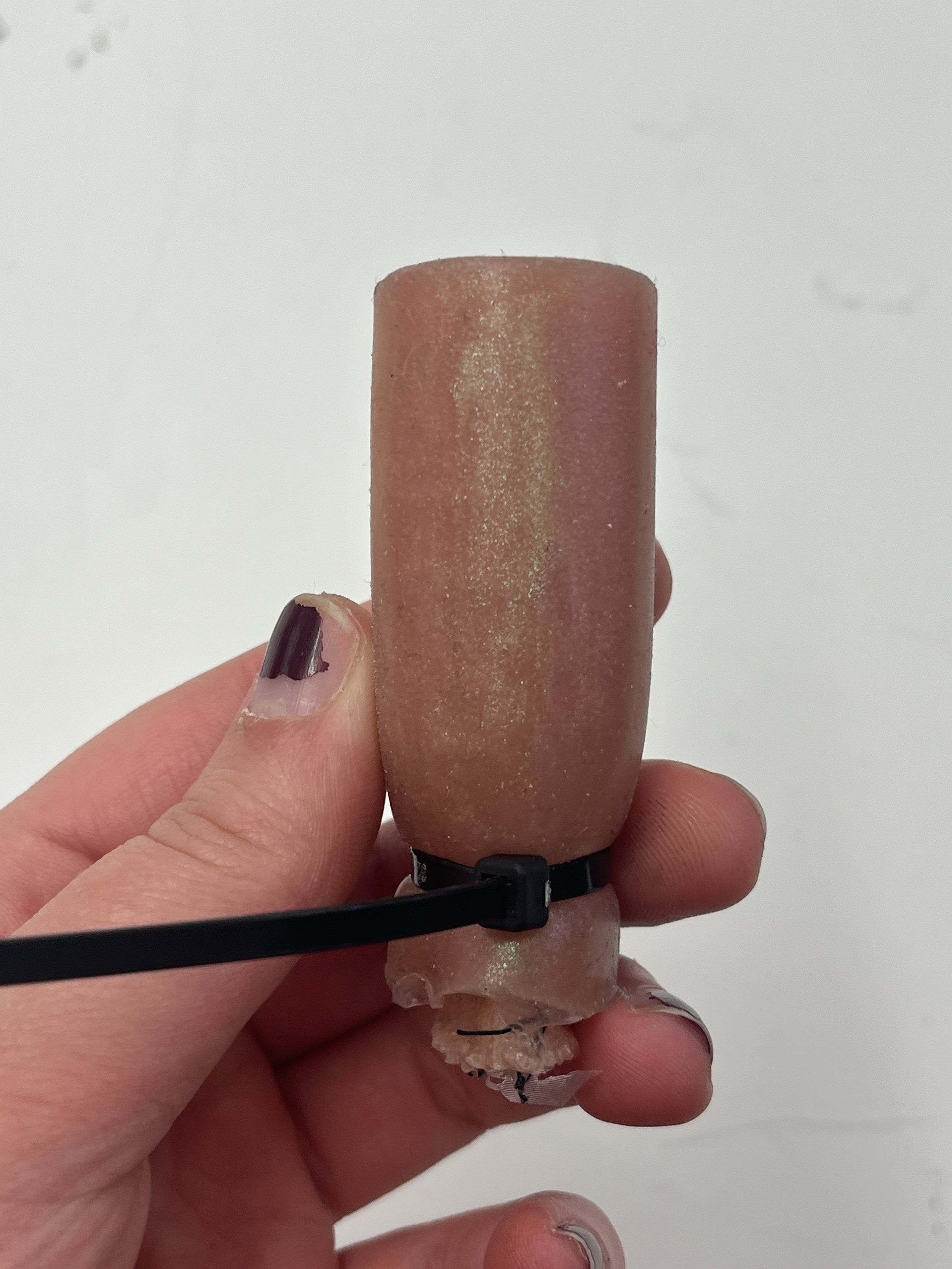Making a Bibenda Actuator
Because it is made from flexible silicone and has stiff internal restraints, a Bibenda actuator is a soft, bending, pneumatic robot. Kari outlines the whole silicone casting process with pictures in her book. Kay, Adnan, and I made our actuators together because the number of steps and timing in this process was a little bit daunting. Here’s a quick overview of the general procedure:
1. Cut parts for the mold. This consisted of cutting a length of PVC pipe, a square of styrene and the insert is that black 3D printed cylinder.
2. Construct the mold by attaching the PVC tube to the styrene using PVC primer and PVC cement. Also cut and sew the fabric gauze sock seen on the mold insert.
3. Mix one part A and part B of the Eco-Flex 00-50 silicone. The pot life of the silicone is 18 minutes, so we needed to work fast after mixing. Then put the silicone and the insert in the vacuum chamber to degas for 5 minutes.
4. Pour the degassed silicone into the mold we made, carefully to not create more air bubbles. This part was super hard and messy.
5. Second degas for 5 minutes. Putting the silicone in the vacuum chamber makes all the bubbles in the silicone come to the surface.
6. Let cure for at least three hours.
Finished Soft Robot!
Kay and I bought some pigments for the silicone a couple of weeks ago so we mixed in glittery mica powders during the third step. So we made kinda funny looking, colorful caterpillars!
TODO: add video here!








